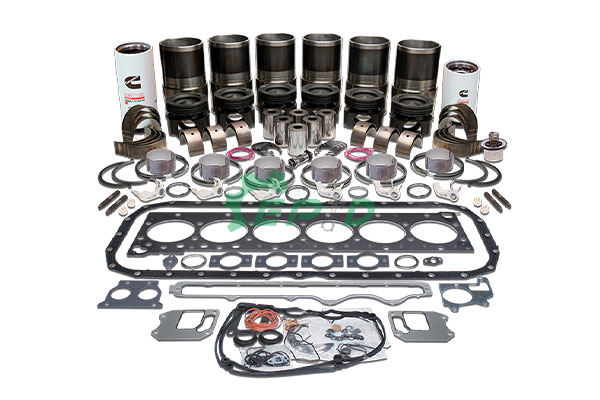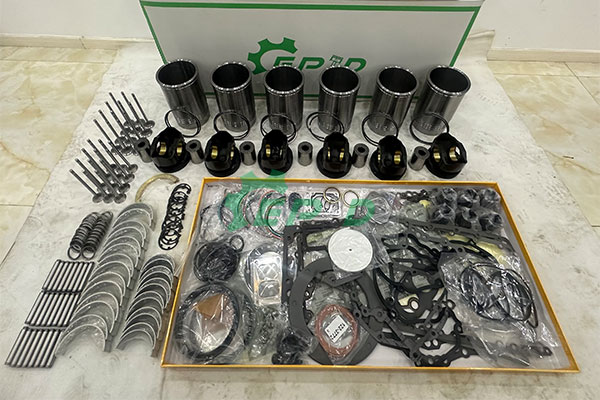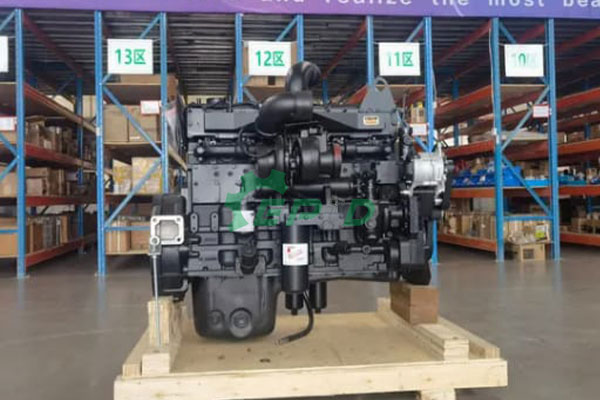Let’s face it: rebuilding a heavy-duty engine isn’t just about turning wrenches. It’s a high-stakes decision that impacts your budget, downtime, and the long-term health of your equipment. Whether you’re maintaining a fleet of Cummins-powered semis or Caterpillar engines in mining rigs, the choice between OEM and aftermarket rebuild kits can feel like navigating a minefield. But what if you could cut through the jargon and make a confident decision? Let’s break it down—with real-world examples and a solution that puts you back in control.
The Heart of the Matter: What’s at Stake?
Imagine this: Your Caterpillar C15 engine starts losing compression. Or your Cummins X15 begins guzzling oil. A rebuild is inevitable, but the path forward isn’t obvious. Do you pay a premium for OEM parts, trusting the manufacturer’s stamp? Or do you roll the dice on a cheaper aftermarket kit? The answer lies in understanding the trade-offs—and knowing there’s a smarter middle ground.

OEM Kits: The Gold Standard… But at What Cost?
OEM (Original Equipment Manufacturer) kits, like those from Cummins or Caterpillar, are engineered to mirror the exact specs of your original engine. Think of them as a “factory reset” button. For instance:
– A Cummins ISX OEM kit includes pistons, rings, and gaskets forged from the same alloys used on the assembly line.
– A Caterpillar 3406E OEM rebuild kit guarantees seamless compatibility, down to the torque specs on every bolt.
The upside? Reliability. OEM parts are rigorously tested, backed by warranties, and often required for compliance in regulated industries.
The catch? Cost and convenience. OEM kits can cost 30–50% more than aftermarket alternatives. Worse, supply chain delays—common for legacy engines—might leave your equipment gathering dust for weeks.
Aftermarket Kits: Bargain or Trap?
Aftermarket kits are the wild west of engine rebuilding. Some are meticulously crafted. others cut corners to hit a price point. Let’s dissect two scenarios:
The Good
Premium aftermarket brands invest in innovation. For example:
A high-end Cummins QSK19 aftermarket kit might use advanced ceramic-coated pistons to reduce friction—a upgrade over OEM.
A Caterpillar C18-compatible kit from a trusted supplier could include reinforced cylinder liners for extreme-duty cycles.

The Bad
Cheap imitations often fail spectacularly. Imagine installing a budget piston ring in your Cummins N14, only to see it crack under load, spewing oil and costing you thousands in downtime.
The lesson? Not all aftermarket kits are created equal. The key is finding a supplier that marries quality with transparency.
Cummins vs. Caterpillar: Real-World Rebuild Dilemmas
Let’s put theory into practice with scenarios every fleet manager dreads:
Case 1: The Aging Workhorse
Scenario: A logging company’s Caterpillar 3516B engine (installed in 2005) needs a rebuild. The OEM kit is discontinued.
OEM Path: Hunt for rare leftover parts at a 60% markup. Wait 8 weeks. Pray.
Aftermarket Win: A supplier like EPID offers a compatible kit with modernized components (e.g., thermal-resistant gaskets), shipped in 7 day.
Case 2: The Cost-Conscious Fleet
Scenario: A trucking company operates 20 Cummins ISX12 engines. Rebuilding all with OEM kits would break the budget.
OEM Pain Point: $1.2M in parts alone.
Aftermarket Solution: EPID’s ISX12 kits, meeting OEM tolerances but priced 35% lower, free up capital to upgrade other assets.

EPID Parts: Bridging the Gap Between OEM and Aftermarket
Here’s the truth: You don’t have to choose between “safe but expensive” and “affordable but risky.” EPID Parts Supplier redefines the game for Cummins and Caterpillar owners by delivering aftermarket kits engineered like OEM—without the OEM baggage.
Why Mechanics and Fleet Managers Trust EPID:
1. No Compromise on Critical Components
Cummins head gaskets laser-cut to 0.001” precision.
Caterpillar bearings treated with anti-wear coatings rivaling OEM.
2. Legacy Engine Lifelines
Still running a Cat 3306 from the ’90s? EPID stocks kits long after OEM support ends.
3. Transparency You Can Bank On
Every EPID kit includes material certifications and 3D blueprints. No guesswork.
4. Downtime Assassin
Need a Cummins QSK95 rebuild kit? EPID’s fast shipping makes it happen.
The Bottom Line: Control Your Rebuild, Don’t Let It Control You
Rebuilding an engine isn’t just about parts—it’s about trust. Trust that the piston rings won’t fail in a Wyoming winter. Trust that your Cat 3500 won’t quit mid-shift in a copper mine. With EPID parts, you’re not buying a kit. you’re buying peace of mind.
OEM purists will always exist, but savvy operators are rewriting the rules. Why pay a premium for a brand name when you can get equal (or better) quality, faster delivery, and personalized support?
Your Next Move:
Whether you’re rebuilding a Cummins for highway hauling or a Caterpillar for earthmoving, EPID Parts Supplier stands ready with kits that work as hard as your engines. Don’t settle for overpriced OEM or roll the dice on sketchy aftermarket parts.
Choose EPID—where every rebuild is a statement of confidence, not compromise.

